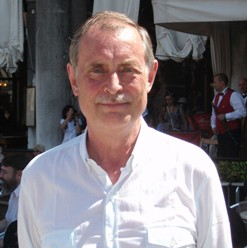The Hallmarks of Cancer Stem Cells
A special issue of International Journal of Molecular Sciences (ISSN 1422-0067). This special issue belongs to the section "Molecular Oncology".
Deadline for manuscript submissions: 30 September 2024 | Viewed by 3109
Special Issue Editors
Interests: the use of synthetic retinoids and vitamins D as drug substances; cancer and normal stem cells; anticancer therapies; blood cell development; abnormalities in cancer stem cells
Special Issues, Collections and Topics in MDPI journals
Interests: cell differentiation; chromatin organisation; transcription factor interplay; carcinogenesis
Special Issues, Collections and Topics in MDPI journals
Interests: vitamin D; vitamin D analogs; retinoids; semi-selective activities; cell differentiation; nuclear receptors
Special Issues, Collections and Topics in MDPI journals
Special Issue Information
Dear Colleagues,
From the very beginning of efforts employed to develop a cure for cancer, the overarching principle has been to target characteristics that are specific to cancer cells so as to spare normal cells as much as possible. In 2011, Hanahan and Weinberg published their landmark review article entitled “Hallmarks of cancer: the next generation”. Traits that were linked to the abnormal behaviour of cancer cells included the controls pertaining to viability, proliferation, differentiation, cytostasis, and motility. Additionally, the longstanding use of chemotherapeutics and radiotherapy to treat cancer has targeted proliferating cells. In 2008, Dick brought to attention how stem cell concepts had renewed cancer research. Cancer stem cells and, as first described, the leukaemia stem cells for acute myeloid leukaemia are rare cells (<0.1%) that sustain a malignancy. Like normal stem cells, cancer stem cells generate a hierarchy of cells, but the offspring are abnormal. Cancer stem cells are spared by conventional chemotherapy and appear to be the prime cause of disease relapse and metastasis; therefore, for the past 10 years, substantial efforts have been employed to target these cells.
Differences between normal and cancer stem cells are important to targeting cancer stem cells. This Special Issue welcomes articles on various aspects to normal stem cells versus cancer stem cells as follows.
Prof. Dr. Geoffrey Brown
Dr. Maarten Hoogenkamp
Prof. Dr. Ewa Marcinkowska
Guest Editors
Manuscript Submission Information
Manuscripts should be submitted online at www.mdpi.com by registering and logging in to this website. Once you are registered, click here to go to the submission form. Manuscripts can be submitted until the deadline. All submissions that pass pre-check are peer-reviewed. Accepted papers will be published continuously in the journal (as soon as accepted) and will be listed together on the special issue website. Research articles, review articles as well as short communications are invited. For planned papers, a title and short abstract (about 100 words) can be sent to the Editorial Office for announcement on this website.
Submitted manuscripts should not have been published previously, nor be under consideration for publication elsewhere (except conference proceedings papers). All manuscripts are thoroughly refereed through a single-blind peer-review process. A guide for authors and other relevant information for submission of manuscripts is available on the Instructions for Authors page. International Journal of Molecular Sciences is an international peer-reviewed open access semimonthly journal published by MDPI.
Please visit the Instructions for Authors page before submitting a manuscript. There is an Article Processing Charge (APC) for publication in this open access journal. For details about the APC please see here. Submitted papers should be well formatted and use good English. Authors may use MDPI's English editing service prior to publication or during author revisions.
Keywords
- developmental biology of normal and cancer stem cells
- other differences to cell status, for example, survivability and quiescence versus proliferation
- metabolic differences
- intracellular signalling
- surface marker expression
- global gene expression including microRNAs
- the frequency of cancer stem cells within a tumour
- importance of cancer stem cells to disease relapse
- importance of cancer stem cells to disease metastasis
- agents that target cancer stem cells








